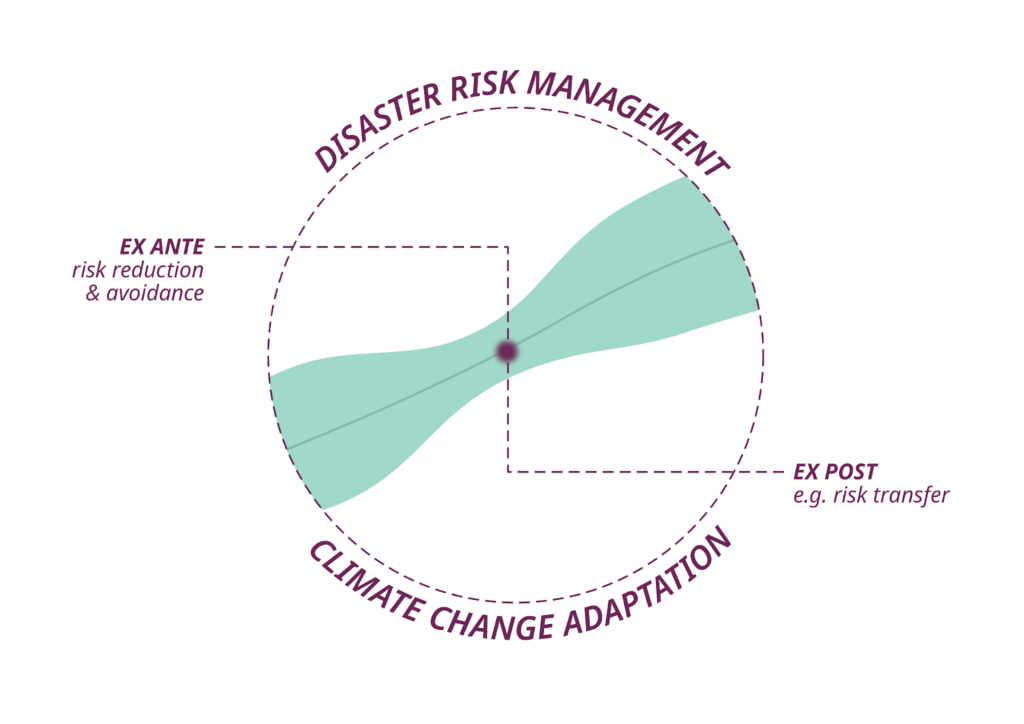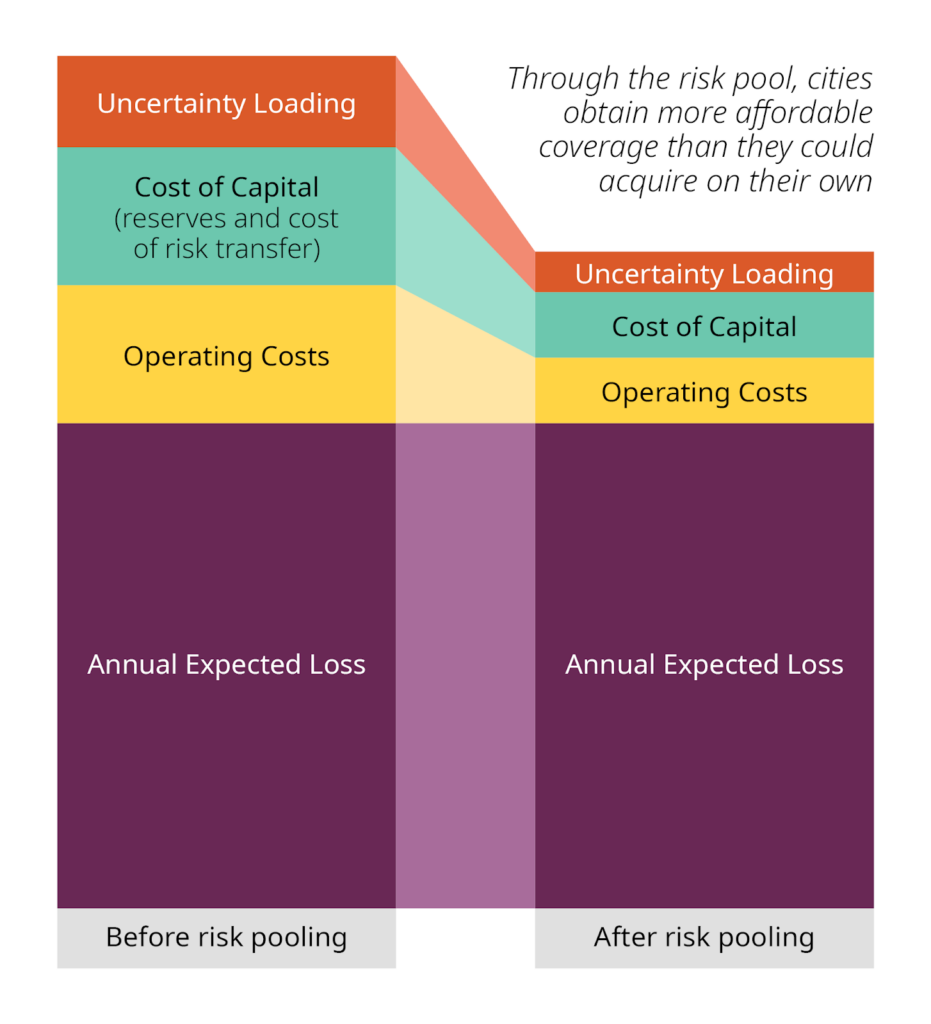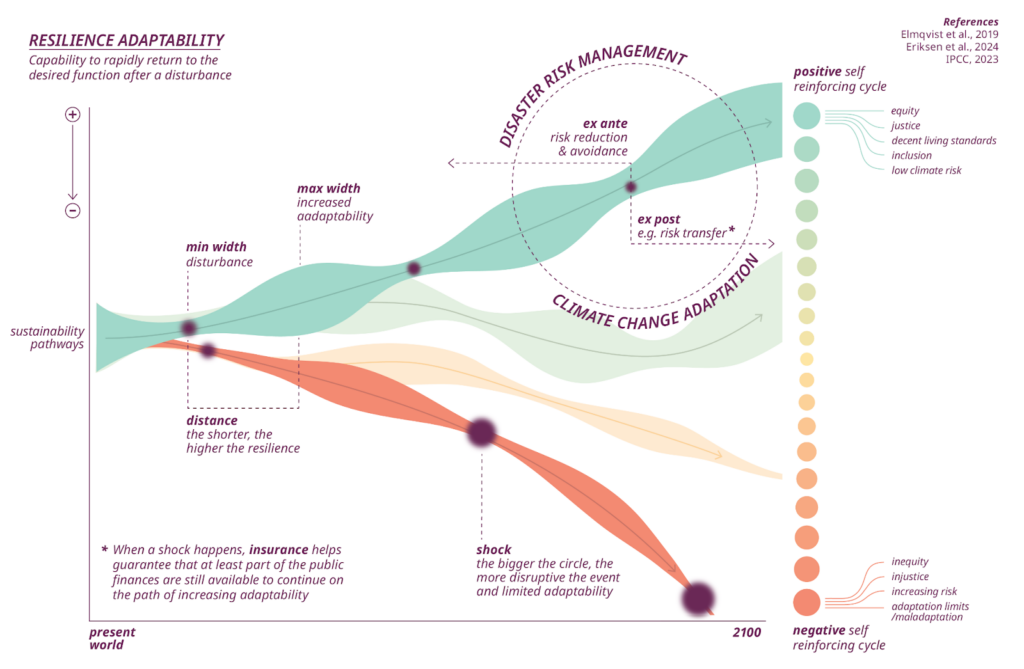A new safety net for Latin American and Caribbean cities
This blog was written by Matteo Bizzotto with contributions from David Jacome Polit, ICLEI World Secretariat.
Floods in Porto Alegre, heatwaves in Curitiba, hurricanes across the Caribbean; Latin American and Caribbean cities are experiencing firsthand the growing costs of climate change. For instance, the third-most intense Atlantic hurricane on record, Hurricane Melissa, alone hit 30 percent of Jamaica’s GDP. Disasters are occurring with increasing frequency and severity, placing unprecedented strain on municipal budgets and threatening to undo hard-won progress in sustainable development and social inclusion. The question is no longer whether such extreme events will occur, but how cities can prepare for the unavoidable while continuing to provide decent living standards for all.
This is the backdrop for the Urban Infrastructure Insurance Facility (UIIF), a pioneering initiative implemented by ICLEI and funded by the German Development Bank (KfW) through the German Federal Ministry for Economic Cooperation and Development (BMZ). The project introduces an innovative way for cities in Latin America and the Caribbean to access climate adaptation financing, including the insurance market, collectively pool risk, and protect critical infrastructure and vulnerable populations. It is the first facility of its kind focused at the city level, marking a turning point in how local governments can transfer part of their disaster risk to the private sector and enhance response capacities.
Insurance as part of a bigger picture
UIIF is not about replacing climate action with payouts. Instead, it is designed as a part of pre-arranged financial instruments that increase preparedness and protect against climate and disaster risks. In fact, comprehensive risk management strategies must combine three steps: Avoiding new risks, reducing existing risks, and transferring the risks that cannot be eliminated. Insurance fits into the third category.

By protecting essential infrastructure and vulnerable populations, urban insurance ensures that when disaster strikes, cities can quickly access funds to recover and maintain critical services – without waiting for lengthy national transfers, external aid, or resorting to crippling debt.
According to Dan Balke of LFS Advisory GmbH, one of the implementation consultants: “Natural events are rising in number and severity. By structuring insurance products that municipalities can procure, we are opening another pillar of financing. Mobilizing private capital for municipal assets is innovative and very much needed in the times ahead.”
Why cities are joining
For many local leaders, insurance is now about lives and livelihood security. In Curitiba, Brazil, climate extremes are already testing the city’s ability to cope with the uptick of perils. Droughts, heatwaves and intense rainfall events are becoming more frequent, straining infrastructure and affecting vulnerable communities.
“Despite having a climate action plan with multiple mitigation and adaptation measures, we need new tools,” said Felipe Maia Ehmke, Director of Climate Change at Curitiba City Hall. “This insurance mechanism is another way of bringing immediate resources to protect infrastructure that is fundamental for the city, such as health units, schools and community facilities. Quick access to funding makes all the difference after a disaster.”
In Recife, officials see UIIF as complementing the years of municipal investment in urban drainage and risk studies. “It is not the only solution; we will continue reducing risks through infrastructure and planning,” said Maria Eduarda Campos, coordinator for innovation, risks and housing policies. “But insurance comes as an additional safeguard, especially for the most vulnerable families, to make sure resilience is not left unfinished.”
A new type of collaboration
What makes UIIF groundbreaking is the collaborative way insurance products are being designed. Cities are not passive clients buying policies off the shelf; rather, they are co-designers, sitting at the table with insurers, risk modelers, and financial experts.
David Jacome-Polit, Head of Resilient Development at ICLEI World Secretariat, describes this as a breakthrough: “Eight years ago, when I was resilience director in Quito, Ecuador, one of our priorities was to explore insurance as part of the city’s resilience strategy. At the time, these solutions simply didn’t exist at the municipal scale. Today, through UIIF, cities are not only gaining access to these instruments; they are shaping them themselves. That is transformative. That is building a culture of comprehensive risk management.”
This process matters because the impacts from disasters are not equally felt. Poorer neighborhoods, informal settlements, and marginalized groups are often left the most exposed, which makes the direct embedment of equity and local knowledge in the design of insurance schemes financially viable and socially just.
Pooling risks, sharing protection
Ten cities – Acapulco de Juárez, Belo Horizonte, Benito Juárez, Buenos Aires, Curitiba, Porto Alegre, Recife, Reynosa, Mérida, and Tegucigalpa – have joined UIIF in its first phase, and more are expected in its second phase. Each participating city is identifying its critical infrastructure and vulnerable groups to protect, transitioning the pilot phase directly to real community needs.
The Facility also introduces the principle of risk pooling: By combining multiple cities into one insurance portfolio, premiums can be reduced and coverage expanded. This model has worked for national governments before, but applying it to municipalities from different countries is a first for the global community.

Image credit: ICLEI – Local Government for Sustainability.
As Andreas Bollmann of Faber Consulting AG puts it: “UIIF would be the first city disaster risk pool in the world. We have seen similar developments at the national level, but never where cities collaborate directly. If implemented properly, this could give Latin American cities cost-efficient access to private sector insurance capacity.”
Insurance as a catalyst for resilience
UIIF is not shifting responsibility away from prevention. On the contrary, it strengthens the case for comprehensive local resilience planning. Insurance (hence risk transfer) works best when combined with risk reduction measures, making payouts relatively smaller and less frequent, while ensuring rapid recovery when they are truly needed.

This layered approach – avoid, reduce, transfer – is at the heart of modern disaster risk management. Cities that master it will be able to protect infrastructure, maintain continuity of services, safeguard livelihoods, and strengthen public trust in times of crisis.
Insurance also reinforces fairness. Because the policyholder is the local government, premiums are paid through public funds – in other words, taxes. Since taxes are generally based on income, wealthier residents contribute more. This way, the costs of protecting vulnerable groups are shared more equitably across society, rather than falling on those least able to afford them.
As Jacome-Polit summed up: “When cities are part of the solution design, they gain agency. In that sense, insurance is both a financial product and a tool to give cities the confidence to face an uncertain climate future with better preparedness.”
Looking ahead: The next phase of UIIF
Building on the success of the first phase of UIIF, at COP30, ICLEI and KfW announced the launch of ProUrbano, extending their partnership to offer cities in Latin America and the Caribbean an additional 46 million euro for risk transfer and risk reduction and climate adaptation, taking the total value of the ProUrbano program to over 58 million euro until 2030.
Under ProUrbano, two complementary instruments – the Urban Infrastructure Insurance Facility (UIIF II) and the Urban Adaptation Financing Facility (UAFF) – will help cities better understand and transfer climate risks, and finance adaptation measures.
By linking insurance and finance with local policy and planning, ProUrbano represents a new generation of resilience programs linking risk understanding to financial empowerment and accelerating adaptation in the region’s most climate-exposed urban areas.
Urban insurance is not a substitute for climate action, but a vital piece of the resilience puzzle. By ensuring rapid access to funds, it helps cities protect essential services, shield the most vulnerable, and recover without spiraling into debt.
To truly secure a just and climate-resilient urban future, we must combine risk reduction, bold climate action, and innovative financial tools – so that when the unavoidable happens, no community is left behind.
Watch this video and learn more about UIIF, featuring insights from cities and partners:







